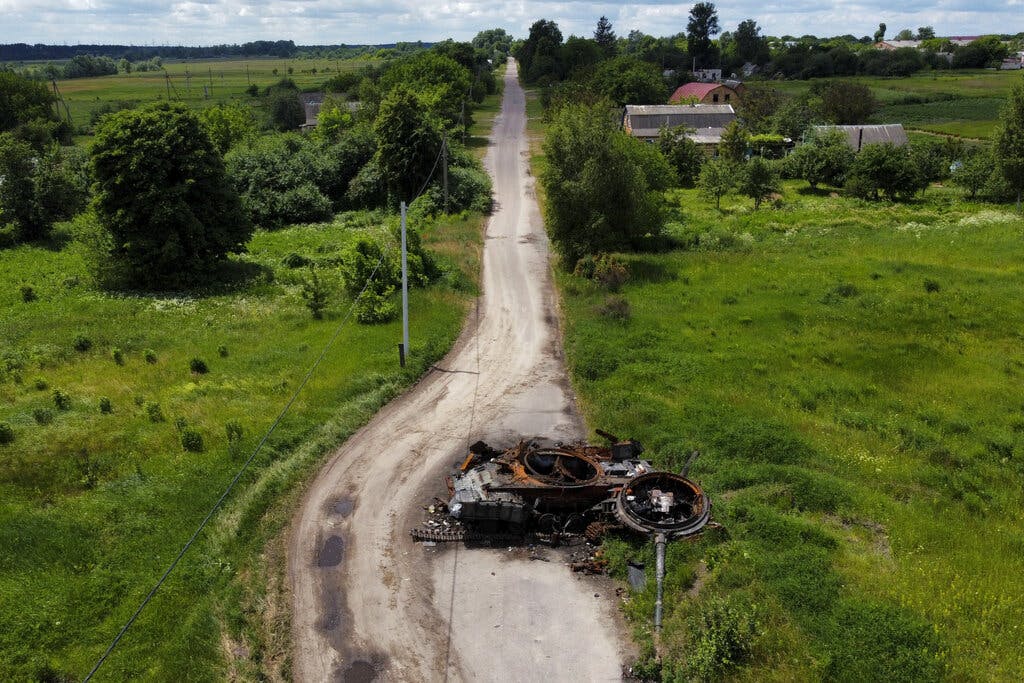The End of the Line for Tank Warfare?
The destruction of more than 3,500 Russian armored vehicles in Ukraine only strengthened the evangelistic fervor of those who preach that the era of armored maneuver warfare is over.

One of the most noteworthy aspects of the 2020 Nagorno-Karabakh War was the ease with which Azerbaijani drones ravaged Armenian armored units. Ever since, a fierce debate has raged among military strategists over the survivability of tanks on the 21st-century battlefield.
The destruction of more than 3,500 Russian armored vehicles so far during the war in Ukraine only strengthened the evangelistic fervor of those who preach that the era of armored maneuver warfare is over.
An Australian foreign affairs writer, Greg Sheridan, savaged “the sheer idiocy and anachronistic frivolity of Australia acquiring tanks … that can never be of the slightest military use to us.”
Last year the Marine Corps deactivated its three tank battalions and a U.K. defense analyst, Lewis Page, declared in the London Telegraph that “the invasion of Ukraine spells the end of modern tank warfare.”
Yet, it appears that Berlin failed to get the memo. Last week the German government announced the development of the KF51 Panther, a next-generation tank designed to replace the Leopard II that’s been the mainstay of the Bundeswehr’s armored formations since the 1980s.
So what does the German military know that the U.S. Marine Corps doesn’t?
Let’s begin with the KF51 itself. Simply put, this tank is a beast.
The Panther will be equipped with a high-velocity 130 mm main gun and sophisticated fire control system that will double its effective range by comparison to the 120 mm cannons now standard on Western tanks.
The KF51 will be protected by a modular package of upgradeable composite armor along with an active protection system that detects and shoots down incoming missiles.
For more than a decade, Israel has been using its Trophy APS to protect its Merkava tanks against RPGs and anti-tank missiles. The proliferation of effective active protection systems will do much to mitigate the effectiveness of drones and anti-armor missiles.
Of course, high-tech bells and whistles are nice, but the key to the tank’s continued battlefield relevance revolves more around tactics than technology.
Ever since organized armies first emerged on the scene of history, the pendulum of military tactics and weapons technology has swung back and forth between offense and defense.
The 700-year primacy of knightly cavalry met its end during the “infantry revolution” of the 14th century at the hands of low-born English longbowmen, Flemish spearmen, and Swiss halberdiers. The dominance of the infantry phalanx was then quite literally blown apart by Hapsburg cannon at the Battle of Pavia in 1525.
So it went over the centuries, with new tactics adapting to new weapons and back again, in a yin-and-yang process of measure and countermeasure. The battle tank itself was the product of this dynamic, developed as a weapon to break through the defensive dominance of the machine gun along the Western Front during World War I.
The threat posed to modern armored vehicles by high-tech drones and anti-tank missiles is nothing new in the annals of war. It’s one of the oldest stories in military history.
As always, the solution to this problem is found in something called combined arms tactics. Combined arms are built around the recognition that each type of military unit has advantages and disadvantages in combat.
Tanks are impervious to artillery and small arms fire, but are also big, noisy, and impossible to hide when on the move. While infantry can be quiet and stealthy, they are also vulnerable to enemy bombardment and machine gun fire.
Combined arms warfare maximizes the strengths and minimizes the weakness of each military element through the coordinated use of infantry, tanks, artillery, air power, and intelligence assets.
Foot soldiers and friendly drones destroy enemy anti-armor teams lying in wait to ambush advancing friendly armored vehicles, while tanks use their firepower to destroy targets threatening the infantry. Instantaneous communications connecting front line troops with friendly artillery and aircraft enable enemy positions to be pulverized at a moment’s notice.
Combined arms warfare exploits flexibility to produce synergy. It requires well-trained troops and commanders who can adapt to protean battlefield conditions while orchestrating the use of different weapons and distinct unit types for maximum tactical advantage. These are skill sets that appear to be well beyond the capabilities of the blundering behemoth that is Vladimir Putin’s army.
In the right hands and with the right equipment, the tank will continue to validate the motto of the U.S. Army’s armor branch as America’s “combat arm of decision.”

